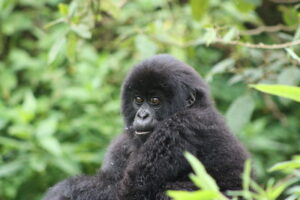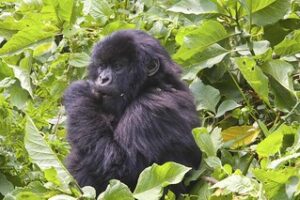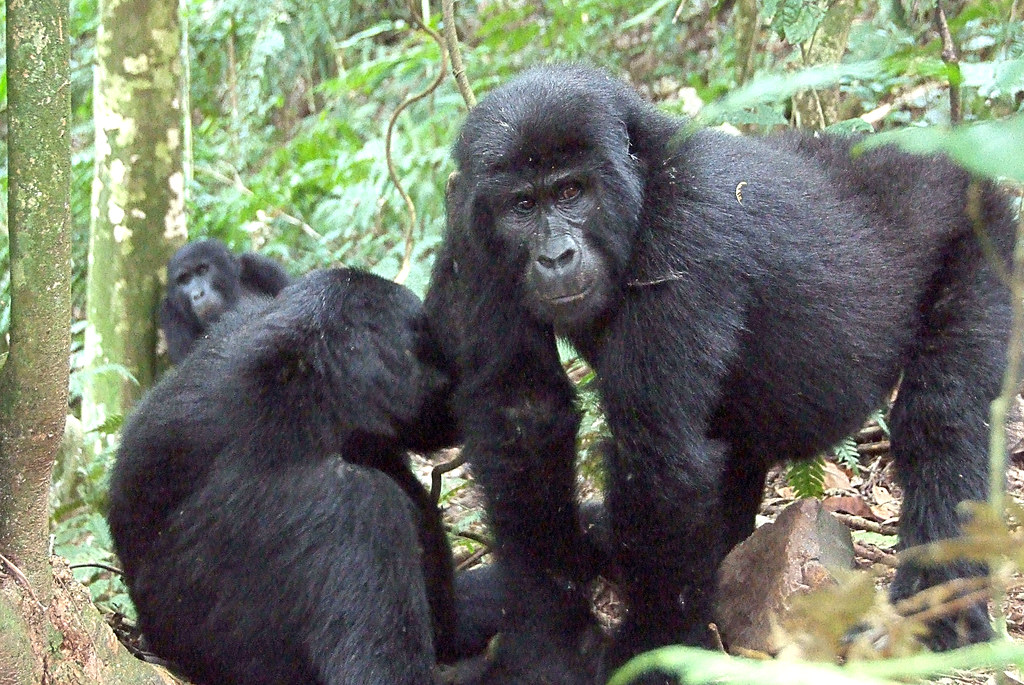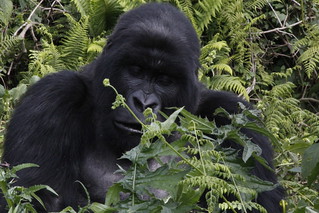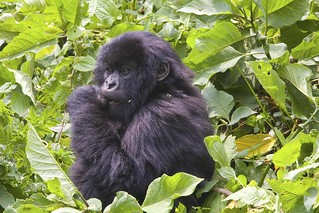Gorillas are social creatures that live in the family structured. Rwanda Gorilla families are always led by the silverback, the strongest male gorilla in the family. the other members of the family are blackbacks (the young male gorillas), the old females, the juveniles and the infants
Rwanda’s volcanos national park is the home to the 12 habituated Rwanda gorilla families that are open for tourism. There are also other groups that are not open for tourist but are used for other studies and research. In this article we are going to focus on the facts about the 12 groups that are open for tourism, including the accessibility, number of groups members, when the groups were formed, the challenges involved in trekking these groups and where each group is likely to be found. Let us look through all these groups and we prepare you for your great adventure.
Susa gorilla family-Rwanda Gorilla families
This was first habituated in 1974, it took its name from a known water stream. In 2009 the group split to form three other group namely Karisimbi, Isimbi and Igisha.
The main Susa group remained with 19 members including 4 silverbacks. All the four subgroups of Susa are located at Karisimbi Volcanoes. These groups are considered medium to too hard to trek.
Sebinyo gorilla family-Rwanda Gorilla families
This group is made of 17 members including 1 silverback. It split in 2020 when 4 members of the group left the family. It is an easy to trek group and is rated easy to medium trekking group.
Amohoro gorilla family-Rwanda Gorilla families
The group is made up of 19members including 4 silverbacks. It was fully habituated for tourist in 2002. The group split in 2002 to form another group called Umubbano. Amahoro has a tendency of sometimes crossing to Democratic republic of Congo. None the less the group is considered easy for trekking.
Agashya gorilla family
This grou was habituated in 1980. In 2002, the Agashya group captured another group and at the present. Currently the group has 19 members including 2 silverbacks. The family lives on valley between Bisoke and Sebinyo. Trekking this group is considered easy.
Kwitonda gorilla family-Rwanda Gorilla families
Originally from Congo where it was habituated, in 2004 the group crossed to Rwanda and settled there permanently to the present day. In 2021 the group split into 2 groups with Kigoma keeping 20 members and Kigoma taking 20 members. Of the 20 members, the 2 are silverbacks. The group is considered easy to trek.
Umubano gorilla family
This is a breakaway group from Amahoro group, and it is made of 13 members including 8 silverbacks. The group lives at the eastern range on eastern flank of Bisoke Volcanoes. The group is considered easy to medium to trek.
Kwisanga-Rwanda Gorilla families
Kwisanga is one of the newest groups in volcanoes. It is a breakaway group of Kwitonda with 16 members
Noheli gorilla family
It is the newest and smallest habituated group of Volcanoes with seven members, habituated in 2021
Hirwa-Rwanda Gorilla families
This group has 18 members that live at the flank of Sebinyo Volcanoes. It is considered easy to medium for trekking.
Bwenge-
This group has 11 members with one silverback, bwenge. It is considered hard to trek and requires you to have a guide to trek this group.
Kirisimbi
This is a breakaway group from Susa group, it further split to form another group isimbi. Kirisimbi is currently made of 10 members including 6 silverbacks. The group is a cross-border group between Rwanda and congo which makes it unreliable for tourism.
Igisha-Rwanda Gorilla families
The group is one of the biggest groups at Volcanoes national park with 34 members it is another breakaway group from Susa family. The group include 5 silverbacks. It is a hard-to-reach group for trekking.
Muhoza
It is found at the flanks of sebinyo volcanoes, with the composition of 19 members including one dominant silverback
Isimbi-Rwanda Gorilla families
Finally, is another hard-to-reach group of 16 members with 1 silverback. Found in bamboo dominated areas of Karisimbi Volcanoes.
NOTE: silverback gorilla is a mature male gorilla
Conclusion
Gorilla trekking in Rwanda is a once in lifetime event that will give you a chance to interact with human closest relatives within their natural habitat area. Different families have been habituated for trekking make sure to choose a family that fits your preference and your physical strength. Trekking a bigger family will always be preferred as it gives you a chance to observe different behavior. Though, the experience will remain breathtaking regardless of the family you trek.


